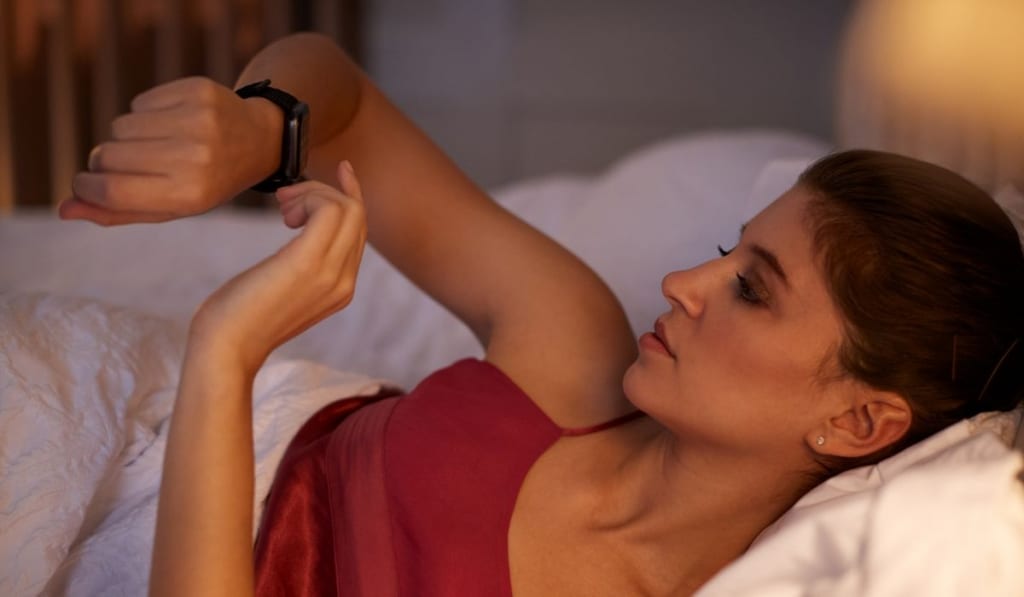Fitbit Not Tracking Sleep? Here’s How to Fix It in Seconds!
A Fitbit device is a great smartwatch with various capabilities, including sleep tracking. However, some Fitbit users complain that they cannot track their sleep. So, if you’re among those asking, why didn’t my Fitbit track my sleep?
If the Fitbit is not tracking your sleep, first try restarting it. Next check the settings in the app to see if sleep tracking is set up, or if sleep data can be pulled from or pushed to the help app based on the permission. If the problem persists, try to customize the sleep sensation level.
So if you want to track your sleep, but it’s not working, you can fix the problem and restore your Fitbit to perfect working condition, so you don’t miss any metric about your sleep. So let’s learn more about the tracker!
How Does the Fitbit’s Sleep Tracking Work?

A Fitbit estimates sleep stages through a combination of heart rate and movement patterns. The tracker will assume you’re asleep when it notices you haven’t moved for an hour. So, if you nap for about 45 minutes, the device will not know you’re sleeping.
It also records additional data like the length of your movements, which gives you information about your sleep behavior.
During sleep, the device tracks beat-to-beat changes in heart rate, called heart rate variability. The numbers fluctuate between transitions, from light to deep sleep and in REM sleep stages. After syncing the device in the morning, it will use your movements and heart rate patterns to calculate your sleep cycles.
Fitbit Sleep Score
One easy way to estimate your sleep is to use the Fitbit Sleep Score, which uses your heart rate data and the time you spend restless or awake.
All this data is used to calculate an overall sleep score, the sum of the individual scores from the different components of sleep, including duration, quality, and restoration. The score adds up to 100.
For the restoration component, the tracker checks the estimated oxygen variation graph as blood oxygen saturation fluctuates.
High variations show a person had disturbances or variations in breathing while sleeping, so this is a crucial component to keep an eye on as it tells about your wellbeing.
Why isn’t My Fitbit Tracking My Sleep?
Now to the big question, why didn’t my Fitbit track my sleep? To fix a problem, it helps to understand the underlying cause. In the case of a Fitbit fitness tracker, there can be numerous reasons it’s not tracking your sleep effectively.
- Broken Device: One of the reasons could be that the device is broken and all components are not working as expected.
- Updates: Also, if there was a recent update that changed the settings, it could cause problems. However, issues like these are not common after an update.
- Needs Cleaning: Sometimes, you need to clean the sensor and emitter to get more accurate readings.
- No Skin Contact: If you sleep in a position that tips the sensor from making contact with the skin, this could also lead to the wrong readings.
- Medications: Another reason the tracker is not working includes drug use that causes changes in your blood pressure; hence the system cannot accurately tell when you’re asleep.
Regardless of the kind of problem making the tracker fail, you can pursue a few types of remedies to restore functionality. Learn below how to reset and restart your Fitbit if it’s not tracking sleep as expected.
How to Restart and Reset Your Fitbit
If the Fitbit device is not tracking sleep, you can restart it and reset its functionality. This should solve the problem in most cases, and it’s an easy process you can do with these steps:
- First, plug your Fitbit’s charging cable into your computer or a power socket.
- Check that the connection is secure and stable, then connect the other end to the device.
- While pressing and holding the side switch of the Fitbit, wait for 10 seconds.
- Depending on your Fitbit model, you should see a smile symbol, a conventional start-up display, or a battery symbol. Once you notice any of these, you can release the switch, then plug the device off.
Restarting the device is among the first steps in your troubleshooting that will help you address common problems. This helps with issues that make the device not record when you’re sleeping. This procedure should work on Fitbit Ace 2, Inspire, Charge, and One.
The procedure is a bit different if you’re using a Fitbit Zip. First, open the battery door to remove the battery and wait for about 10 seconds. Then, put the battery back and close the door, and it should work normally.
How to Adjust the Sleep Sensitivity Mode
One of the features of the Fitbit that you should watch out for is the sleep sensitivity mode. The Fitbit will not function properly if the settings are too low for the sensitivity mode.
Often, errors in these settings are caused when you fidget a lot during sleep. The sensitive mode cannot discern if you’re sleeping if the settings are not configured correctly.
On the App
Follow these steps to change your Fitbit’s sleep sensitivity mode:
- First, open the Fitbit app, then your profile.
- Navigate to the Sleep Sensitivity setting in the Advanced settings section.
- Change the settings to Sensitive or Normal mode.
On Desktop
You can also use your desktop to change these settings following these steps:
- First, visit Fitbit.com and log in with your credentials.
- Next, find Settings from a drop-down menu on the upper right section of the page.
- Next, open Sleep sensitivity and choose Sensitive or Normal mode.
- Finally, submit to apply these changes to your Fitbit device.
Enhanced sensitivity means the device can pick up data about your sleep easier. It will be able to track your heartbeats and other vital changes throughout your sleep.
How to Manually Adjust the Fitbit’s Sleep Log
Sometimes, adjusting the sensitivity mode is not enough, as other problems could prevent the Fitbit from functioning seamlessly. However, you can use the Fitbit app to track sleep if you still have the same tracking problems.
This is possible through a start and stop sleep feature you can find on the app. Besides, the app helps you make modifications if the sleep record posted incorrect data. Follow these steps to record your sleep manually:
- Open the Fitbit app and select Sleep tile.
- On the three spots, choose to update.
- Next, input the time you went to sleep or woke up.
- Save.
Manually recording sleep ensures you don’t need to worry whether the device is doing it automatically. But this option should be a temporary fix while restoring your device’s functionality, as it should be able to tell when you’re sleeping or doing other activities automatically.
This option may not be ideal as it does not allow you to perceive information about the different sleep stages and patterns.
How to Set Sleep Goals Through the Fitbit App

Fitbit offers many helpful settings that help you customize your experience for the best outcome. For example, one of the device’s capabilities is the ability to set sleep goals on the Fitbit app.
You can specify the number of hours you want to sleep each night through the goals. For adults, the preferred sleep duration is not less than 7 hours. These are the steps to set up your sleep goals.
- Open the Fitbit app and pick Sleep tile.
- Find the gear symbol on the top-right corner and tap on it.
- Modify or create a sleep goal.
- Hit Done to save changes.
Conclusion
Wearing a Fitbit when going to bed can reveal a lot of information about your sleeping patterns. This includes vital data about your heartbeat that could reveal things about your health situation. However, sometimes the Fitbit device will fail to track sleep as expected.
This could be because of many reasons. Try restarting following the above procedure. You can also opt for manual configuration if the device fails to detect sleeping automatically.